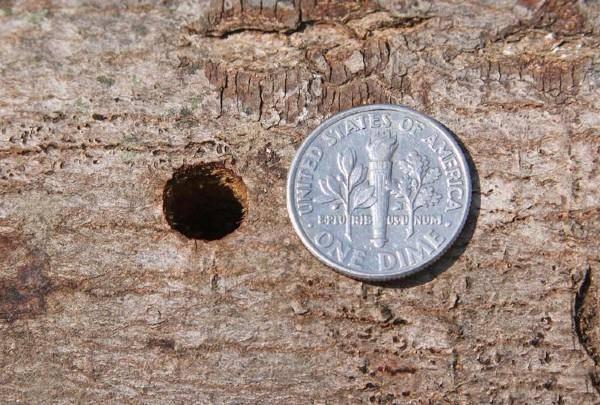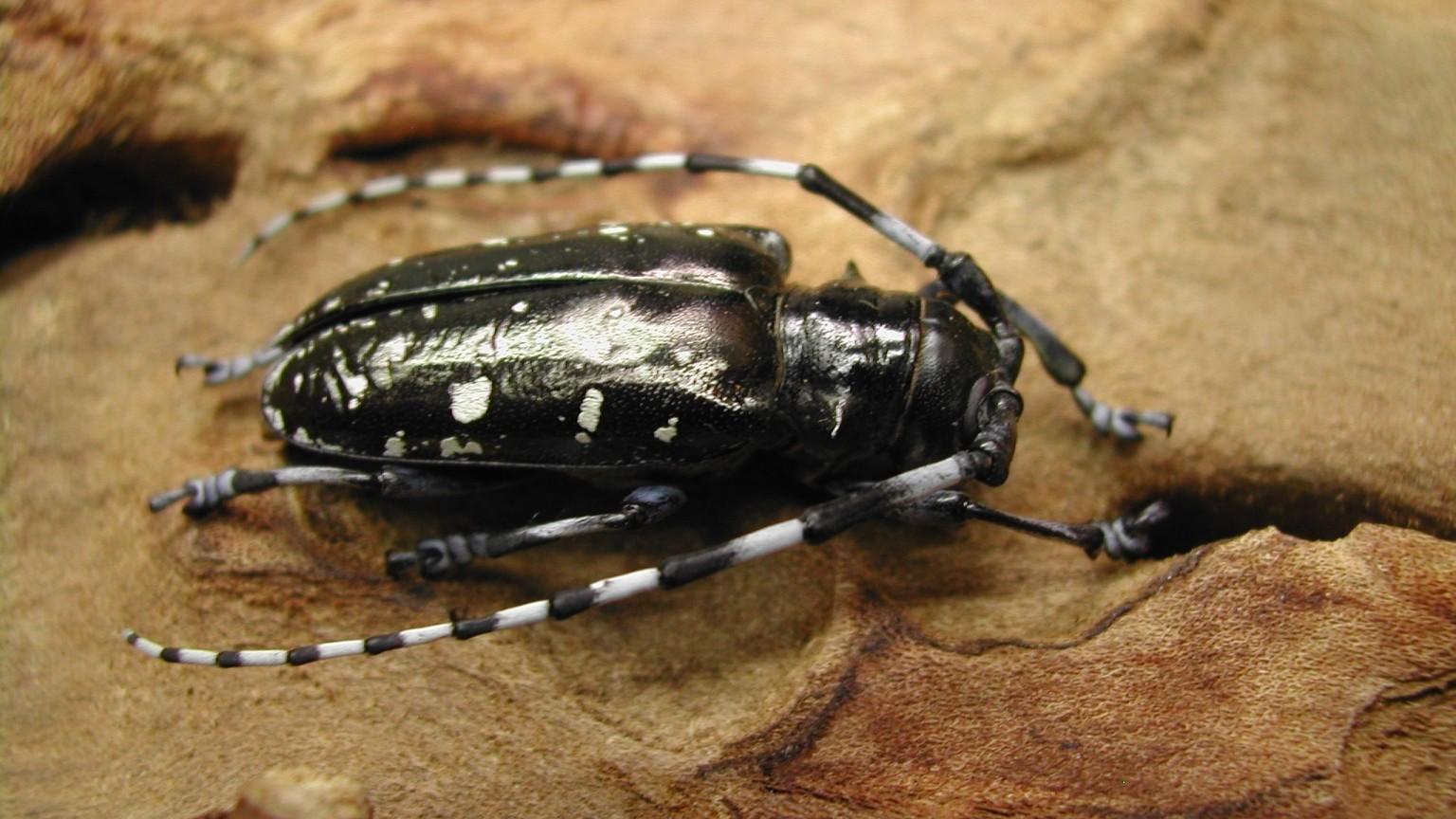The Asian longhorned beetle (ALB) is a very serious exotic pest that was introduced in solid wood packing material from China. It has the potential to cause more damage than Dutch elm disease, chestnut blight, and gypsy moths combined. The beetle was first detected in Brooklyn, NY in 1996. It has since been discovered in Chicago (1998), Jersey City, NJ (2002), Borough of Carteret, NJ (2004), Prall’s Island (near Staten Island), NY (2007), and in Worcester, Massachusetts (2008). In June of 2020, the invasive beetle was discovered for the first time in South Carolina. As of 2021, there is now an ALB Emergency Quarantine Regulation for South Carolina.
Biology
-
Adult is 1 to ½ inches long, shiny black with white spots, and long antennae with black and white bands.
-
One generation per year. Adults are present from July to October, later if temperatures are warm. They usually stay on trees they emerged from or will migrate short distances to find a new host to feed and reproduce.
-
Females can lay up to 160 eggs. She chews oval to round pits in the bark in which she lays eggs. Eggs hatch in 10-15 days.
-
Larvae tunnel under the bark and feed on living tissue through the fall and winter. They eventually pupate in the wood and emerge through round exit holes the following spring.
Host trees
In the U.S., ALB is known to attack 29 species of deciduous hardwood trees. ALB prefers species of maple (Acer spp.) including boxelder, Norway, red, silver, and sugar maples. Other known hosts include alders (Alnus spp.), birches (Betula spp.), elms (Ulmus spp.), horsechestnut (Aesculus spp.), poplars (Populus spp.), sycamore (Platanus spp.), and willows (Salix spp.)

Asian longhorned beetle emergence hole. Photo: Joe Boggs, Ohio State University, Bugwood.org
Signs and symptoms
-
Adult beetles (large 1-1 ½ inches, shiny black, white spots, long banded antennae 1 ½ to 2 ½ times the body length, bluish feet)
-
Oval to round pits in bark and possibly oozing sap, especially on maples.
-
Round holes, 3/8 inch or larger on trunk and branches larger than 1 ½ inches in diameter.
-
Accumulation of coarse sawdust in branch crotches and around the base of infested trees.
Report: If you spot the Asian longhorned beetle, please let us know! Send us notification through the Ask Extension form on our website. Please attach digital photos.
Additional resources
Asian Longhorned Beetle | USDA
